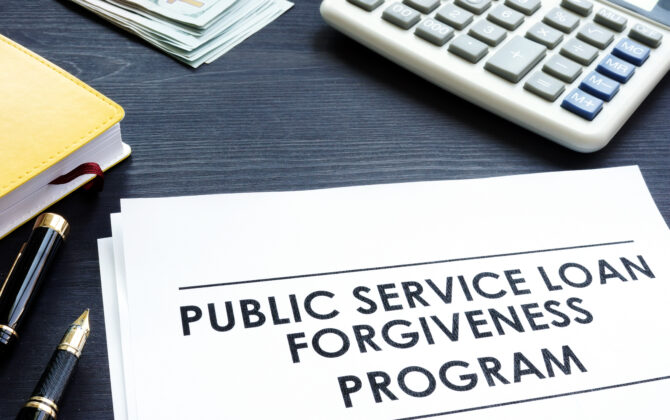Historically, “Income-Driven Repayment (IDR)” or the “Income-Driven Repayment program” has been used to describe a collection of individual plans that provide federal student loan borrowers with options beyond the 10-year Standard Repayment Plan.
For borrowers who may be having difficulty making their monthly payments, IDR plans provide options other than forbearance to make student loan debt more manageable. Monthly payments under an IDR plan are typically lower than the payments a borrower would make in the Standard Repayment Plan. They also provide a path to eventual forgiveness.
What are the types of IDR?
IDR plans set up repayment structures based on a borrower’s adjusted gross income and family size using different formulas. Before the Saving on A Valuable Education (SAVE) plan was introduced in 2023, there were four different IDR plans:
At the end of 2023, SAVE replaced REPAYE and became the plan that now makes sense for the vast majority of borrowers, and other IDR plans are being phased out by the federal government. Use the chart below to see the status of different IDR plans and compare SAVE against them:
IDR Comparison Chart
|
Applications for SAVE, other IDR plans, and loan consolidation are available on http://studentaid.gov. You can also submit a PDF application to your loan servicer by uploading it to your servicer’s website, or mailing it to them. Expect a delay in processing times. The Education Department recommends checking its website for updates – there is no processing time estimate available. |
|
Plan |
Monthly Payments |
Repayment Period |
Status |
|
SAVE (formerly REPAYE) |
- 5% of discretionary income for Undergraduate Loans
- 10% of discretionary income for Graduate Loans
- Weighted average for borrowers who have both
|
- 10 years for low-balance borrowers (less than $12,000)
- 20 years for only undergraduate loans
- 25 years for any Graduate Loans
|
Replaced REPAYE; facing legal challenges with uncertain future. |
|
Income-Based Repayment (IBR) |
- 10-15% of your discretionary income (and your spouse’s if filing jointly)
- Never more than federal 10-year Standard Repayment Plan amount
|
20-25 years, depending on when you become a new borrower |
Accepting enrollments, but borrowers cannot select plan after 60 payments on REPAYE that occur on/after July 1, 2024. |
|
Income-Contingent Repayment (ICR) |
The lesser of the following: - 20% of your discretionary income or
- What you would pay on a repayment plan with a fixed payment over the course of 12 years, adjusted according to your income
|
25 years |
Accepting new enrollments. |
|
Pay as You Earn (PAYE) |
- 10% of your discretionary income (and your spouse’s if filing jointly)
- Never more than federal 10-year Standard Repayment Plan amount
|
20 years |
Accepting new enrollments. |
Understanding the SAVE plan
SAVE is designed to provide an even better repayment and forgiveness option for many borrowers with federal student loans. There are a few unique factors that elevate SAVE above older IDR plans:
- The SAVE plan offers a drastic change in how monthly payments are calculated compared to the former version of REPAYE and other IDR plans. Like other plans, your payment is based on your income and family size. But instead of 10% of your discretionary income, under SAVE, your payment is calculated at 5% for undergraduate loans and 10% for graduate loans. For borrowers with both loan types, the program uses a weighted average between 5% and 10%based on the original principal balances.
- Discretionary income is calculated differently. Instead of defining discretionary income as the difference between your adjusted gross income (AGI) and 100% or 150% of the poverty guideline for your location and family size, SAVE uses 225% of the poverty guideline. (Note that poverty guidelines are maintained by US Department of Health and Human Services at hhs.gov/poverty-guidelines.)
- Interest accrual. SAVE also improves how interest is factored into payments by eliminating all of the remaining interest when scheduled payments are made on time. This means if your monthly payment is lower than the accumulated interest you would normally have to pay, the remainder won’t be capitalized or added to your balance when you make your regular payment.
- Married borrowers. Formerly, under REPAYE, there was no option for married borrowers (regardless of filing jointly or separately) to elect for only their individual incomes to be considered in their calculations for monthly payments. This meant that if a borrower with loans was married to someone without loans, they were essentially penalized with a much higher monthly payment as both incomes were used in the calculations. This changes under SAVE – married borrowers who file their taxes separately will not be required to include their spouse’s income in their payment calculation.
- Special provision for low-balance borrowers. Under SAVE, borrowers with an original balance of less than $12,000 will get a 10-year term, and for amounts above $12,000, it’s an additional year per $1,000. So, a borrower with a $14,000 original loan balance could potentially receive forgiveness in 12 years instead of 20 or 25 offered by other IDR plans.
For more information, go to the Federal Student Aid website.
Public Student Loan Forgiveness (PSLF)
Typically, borrowers enroll in an IDR plan such as SAVE when they’re pursuing PSLF1 as a full-time government or nonprofit employee.
How PSLF works
To be eligible for PSLF, you must be employed full-time at a qualifying nonprofit
To be eligible for PSLF, you must be employed full-time at a qualifying nonprofit organization or government entity at any level (federal, state, local, or tribal), including the US military. (Note that PSLF is not available to federal student loan borrowers working in the private sector.)
If you enroll in PSLF and meet program requirements for the duration of you enrollment, you will have the remaining balance of your loans forgiven after ten years of repayment (or 120 qualifying payments) under qualifying repayment plan such as SAVE.
Note that there are currently proposed changes to the PSLF and IDR programs that could change eligibility, requirements, and potentially the amount of money you could save. For more information, visit studentaid.gov or schedule a consultation with a GradFin student loan specialist.2 You can also learn more in our guide to PSLF, or on studentaid.gov.
Navigating the PSLF application process
Navigating the requirements of PSLF throughout the application and enrollment process can be challenging. The program is often criticized for its complexity and changing rules.
To address the challenges around applying for PSLF, our student loan specialists are available to help you keep up with the changes that apply to your situation and give you peace of mind. Learn more here.
Pros and Cons of IDR plans
The pros and cons of IDR are subjective to each individual borrower. While IDR can help many borrowers with lower income at the beginning of their careers, it’s not for everyone.
For example, if you’re a high earner or your student loan amount is low enough that it’s manageable for your budget, then the 10-year Standard Repayment Plan route may make more financial sense. In this case, you could save on the interest that would accrue over an IDR plan’s extended repayment period.
You will need to recertify your income and family size each year to remain on any given IDR plan. With that in mind, there are some general benefits and drawbacks to IDR plans overall:
Benefits
In general, the pros of IDR include:
- Lower monthly payments—even as low as a zero payment
- Potential loan forgiveness
- Financial benefits for those who have high debt-to-income ratios or low income
Drawbacks
In general, the cons of IDR include:
Is IDR right for you?
To learn more about IDR and how to apply, contact our student loan specialists for a free 30-minute phone consultation and analysis of your student loans. Our specialists are well-versed in the details of IDR and can help you understand the right plan for you based on your unique financial profile. Schedule a free consultation to discuss IDR or other repayment options and determine which path is right for you.
Next steps
To learn more about individual IDR plans, which one would be best-suited for your financial needs, and how to apply, contact our student loan specialists for a free 30-minute phone consultation and analysis of your student loans.
Our student loan specialists are well-versed in the details of each IDR plan and can help you understand the right plan for you based on your unique financial profile. Schedule a free consultation to discuss IDR or other repayment options and determine which plan is right for student loans and employment situation.




